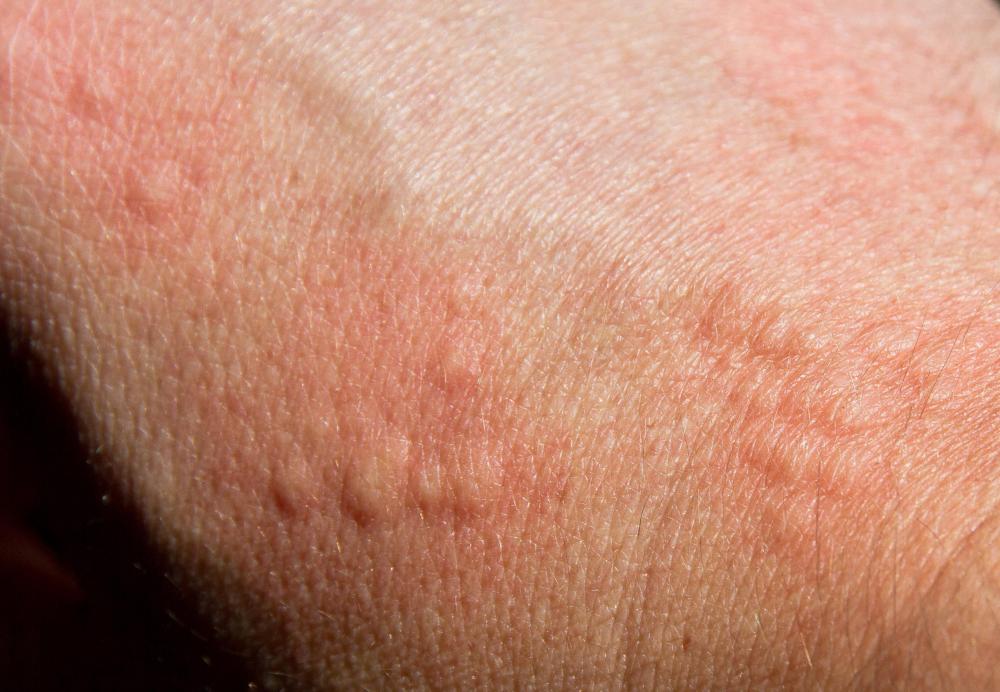At WiseGEEK, we're committed to delivering accurate, trustworthy information. Our expert-authored content is rigorously fact-checked and sourced from credible authorities. Discover how we uphold the highest standards in providing you with reliable knowledge.
What are the Different Types of Food Allergy Reactions?
The different types of food allergy reactions may vary depending on the severity of the allergy and the type of food allergy a person has. Some common symptoms that may indicate a food allergy include swelling, hives, and difficulty breathing. It is also not uncommon for a person experiencing food allergy reactions to become faint or dizzy. In many cases, food allergy symptoms are very minor and considered nothing more than an inconvenience to the person experiencing them. Other times, food allergy reactions can be extremely life-threatening.
In addition to hives and swelling, some other food allergy reactions may include itchy skin, diarrhea, and nausea. In most cases, diarrhea and nausea result from allergic reactions to dairy products. All other symptoms could be the result of an allergy to various foods, and for this reason it is probably a good idea for a person to write down all instances of reactions to foods in an attempt to determine which foods are causing the reactions. A person who suspects he has a food allergy cannot be certain until his symptoms are diagnosed by a doctor. It may be that problems experienced are related to some other type of illness rather than a food allergy, which is why getting a doctor's advice is usually so critical.

A doctor can evaluate a person's food allergy reactions and do a series of allergy tests to determine what a person is allergic to. Some of these tests are performed on the skin, while others may involve testing the blood. Additionally, it may be necessary for a doctor to get a stool sample from a patient in order to determine if a food allergy is present. Once the diagnosis has been made, doctors typically talk with patients about different options for treatment.

Treating a food allergy may involve prescription medication or simply staying away from the offending food. In most cases, particularly when the food allergy is likely to be a temporary problem, a doctor will request that a patient avoid eating foods she is allergic to. Children who have food allergies almost always outgrow them by the time they are preteens and have no further problems with food allergy reactions after that point. Some allergies, such as those relating to fish or shellfish, normally do not go away. Additionally, the food allergy reactions that may occur as a result of eating certain types of fish tend to be life-threatening in nature.
AS FEATURED ON:
AS FEATURED ON:

















Discuss this Article
Post your comments